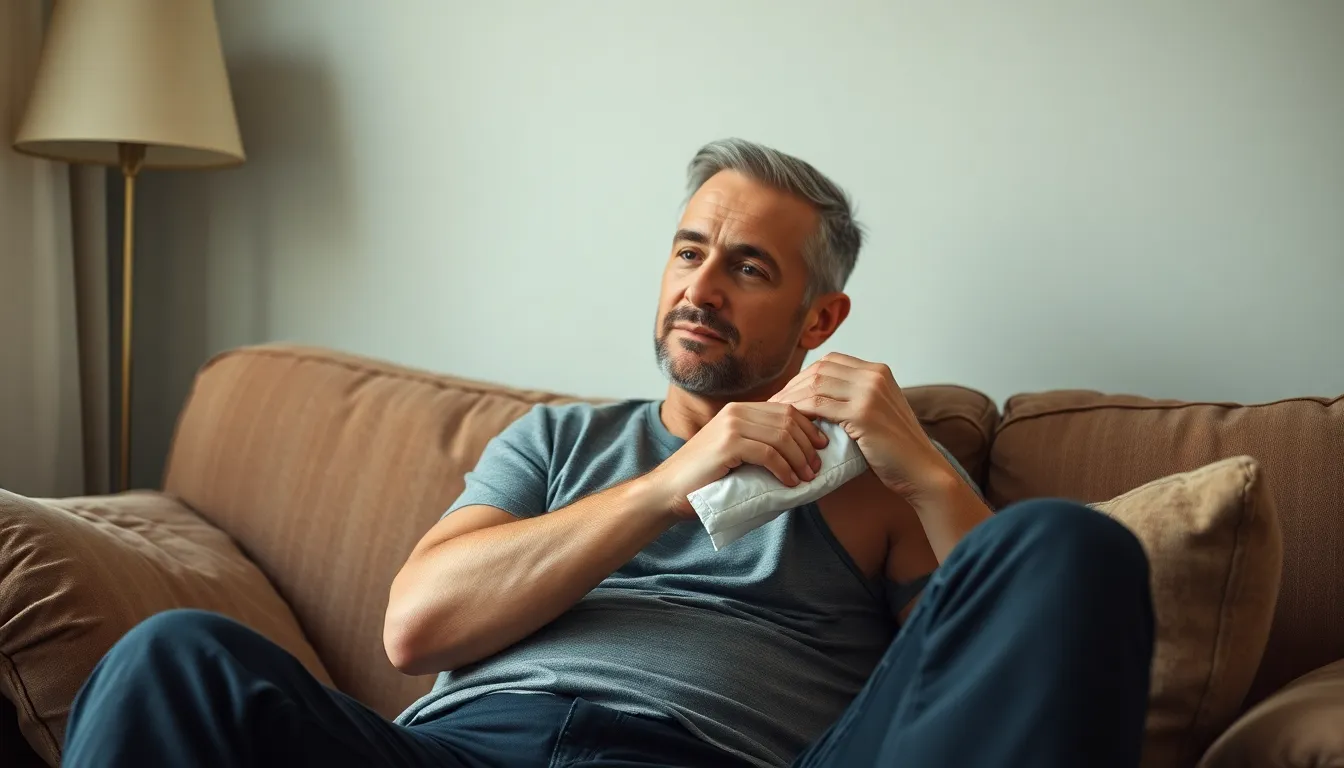Table of Contents
ToggleTennis elbow—sounds fancy, right? But it’s not just for athletes. It’s that pesky pain that sneaks up on anyone who’s ever lifted a grocery bag or clicked “next episode” one too many times. If you’re tired of wincing every time you reach for your morning coffee, it’s time to tackle this issue head-on.
Understanding Tennis Elbow
Tennis elbow, or lateral epicondylitis, can impact anyone engaging in repetitive arm movements. This condition often leads to discomfort and hinders daily activities.
Symptoms of Tennis Elbow
Common symptoms include pain on the outer part of the elbow, which may extend to the forearm or wrist. Stiffness in the elbow often accompanies these sensations, affecting overall mobility. Many experience weakness when gripping objects, such as tools or even a cup. Pain may worsen with specific movements, like twisting or lifting. Notably, lingering discomfort can disrupt normal routines, prompting individuals to seek relief.
Causes of Tennis Elbow
Repetitive motions often lead to tennis elbow. Activities such as typing, painting, or playing racquet sports can contribute to stress on elbow tendons. Aging also plays a role, as tendon flexibility decreases over time. Micro-tears develop in the tendons due to overuse, causing inflammation and pain. Environmental factors, like using poorly designed tools, may increase strain on the elbow. Recognizing these causes helps in addressing the issue more effectively.
Quick Relief Strategies

Quick relief methods for tennis elbow can help alleviate pain and restore function, allowing for a more comfortable daily routine. Effective techniques include ice therapy and rest.
Ice Therapy
Ice therapy reduces inflammation and numbs the pain in the affected area. Applying an ice pack for 15 to 20 minutes every hour can significantly improve comfort. Ensure to wrap the ice pack in a cloth to prevent skin damage. This method is most effective during the initial stages of discomfort, especially after activities that strain the elbow. Cold therapy can help athletes and non-athletes manage symptoms and promote healing.
Rest and Immobilization
Resting the affected arm is crucial for recovery. Limiting activities that exacerbate pain allows the elbow tendons to heal. Using a brace or splint provides needed immobilization, minimizing movement that could further irritate the condition. A brace helps support the elbow and allows for better mobility once symptoms improve. It’s beneficial to modify daily tasks by avoiding grips or motions that trigger discomfort. Prioritizing rest promotes a quicker return to normal activities.
Effective Exercises
Engaging in targeted exercises can significantly aid in the recovery from tennis elbow. These exercises help alleviate pain, improve flexibility, and restore strength.
Stretching Exercises
Stretching exercises focus on improving flexibility in the forearm. Wrist extensions stretch the wrist flexors by extending the arm while keeping fingers pointing down. Holding the stretch for 15 to 30 seconds enhances muscle elongation. Another effective stretch involves wrist flexion, where the individual bends the wrist upward with the palm facing downward. This action stretches the forearm extensors, providing needed relief. Performing these stretches 3 to 5 times daily can lead to noticeable improvements in pain and mobility.
Strengthening Exercises
Strengthening exercises build the muscles around the elbow to provide support. Start with a wrist curl using a lightweight, held with the palm facing up while the forearm rests on a flat surface. Completing 10 to 15 repetitions builds strength gradually. Additionally, reverse wrist curls target the forearm extensors, done by holding the weight with the palm facing down. This exercise also improves muscle balance. Implementing these strengthening exercises 2 to 3 times weekly enhances recovery and prevents future injury.
Treatment Options
Addressing tennis elbow involves various treatment options that can accelerate recovery and reduce pain.
Over-the-Counter Medications
Non-prescription medications provide quick relief from discomfort. Ibuprofen and naproxen are common choices known for their anti-inflammatory properties. Taking these can help manage pain and swelling. If symptoms persist, pairing medications with other treatments enhances effectiveness. Always follow dosing instructions to avoid potential side effects.
Physical Therapy
Physical therapy plays a vital role in rehabilitation. A trained therapist designs exercises targeting the affected tendons and muscles. Stretching routines improve flexibility, while strengthening exercises build support around the elbow. Sessions typically occur once or twice a week, gradually increasing intensity. Progress tracking and adjustments ensure optimal recovery. Incorporating physical therapy alongside other treatment methods encourages a steady return to normal activity.
Preventive Measures
Preventive measures can significantly reduce the risk of developing tennis elbow. Focusing on proper technique and selecting appropriate equipment plays a key role in this process.
Proper Technique
Using proper techniques during activities can prevent undue strain on the elbow. When playing sports, maintaining correct grip and swing mechanics helps distribute force evenly. Avoiding excessively tight grips during repetitive movements, such as typing or lifting, minimizes stress on the tendons. Adjusting body position also aids in reducing tension. Incorporating regular breaks during prolonged activities allows muscles to recover, further decreasing the likelihood of injury.
Equipment Selection
Choosing the right equipment can also mitigate the risk of tennis elbow. Selecting racquets with appropriate grip sizes and weights can enhance control, reducing strain during play. Utilizing ergonomic tools for everyday tasks decreases stress on the elbow during repetitive motions. Opting for cushioned handles on tools, such as hammers or shovels, helps absorb impact and lowers the risk of injury. Testing various options ensures that individuals find suitable equipment tailored to their body mechanics.
Tennis elbow can be a frustrating condition that disrupts daily life. By implementing the right strategies for relief and recovery, individuals can experience significant improvement. It’s essential to prioritize rest and utilize methods like ice therapy to reduce inflammation.
Incorporating targeted exercises and considering physical therapy can further enhance recovery. Adopting preventive measures is crucial to avoid future flare-ups. By focusing on proper techniques and ergonomic tools, anyone can protect their elbows from strain. With dedication and the right approach, overcoming tennis elbow is entirely achievable.




